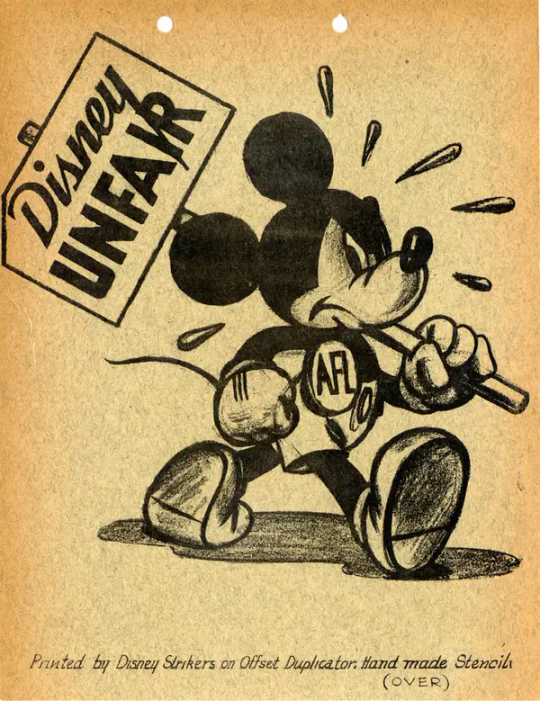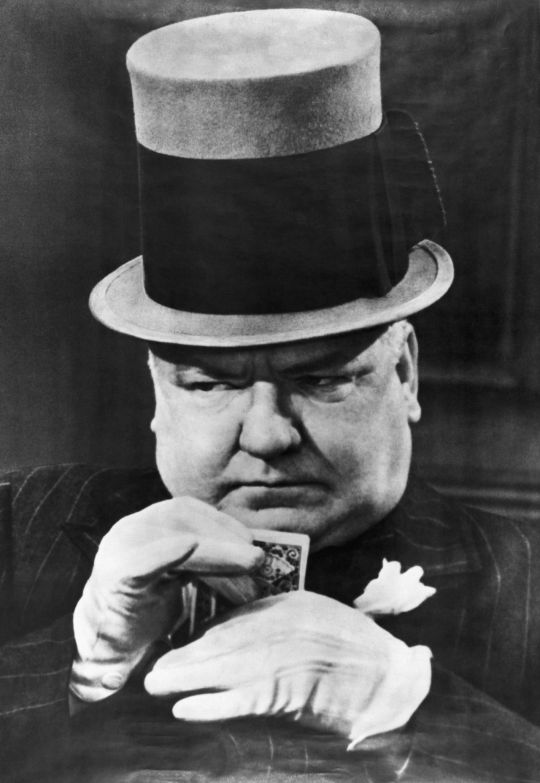#w.c. fields
Explore tagged Tumblr posts
Text

W.C. Fields Juggling top hats in 1900
120 notes
·
View notes
Text

W.C. Fields dresses as Santa Claus and rings in 1938 in the company of some beautiful Paramount starlets.
26 notes
·
View notes
Text











Coo Coo for W.C. Fields Puffs
45 notes
·
View notes
Text

" I cook with wine, sometimes I even add it to the food." ― W.C. Fields
99 notes
·
View notes
Text
Old Hollywood stars born between 1878 and 1891














Lionel Barrymore (1878, April 28)
Victor Sjöström (1879, September 20)
W.C. Fields (1880, January 29)
Cecil B. DeMille (1881, August 12)
John Barrymore (1882, February 15)
Bela Lugosi (1882, October 20)
Lon Chaney (1883, April 1)
Douglas Fairbanks (1883, May 23)
Walter Huston (1884, April 5)
Edward Everett Horton (1886, March 18)
Al Jolson (1886, May 26)
Boris Karloff (1887, November 23)
Charlie Chaplin (1889, April 16)
Ronald Colman (1891, February 9)
#lionel barrymore#victor sjöström#w.c. fields#Cecil B. DeMille#john barrymore#bela lugosi#lon chaney#douglas fairbanks#walter huston#Edward Everett Horton#al jolson#boris karloff#charlie chaplin#ronald colman#old hollywood#classic hollywood
14 notes
·
View notes
Text

Screenland magazine, March 1938
Snow White and the Seven Dwarfs (1937) took 3 years, 750 artists, and nearly 2 million separate paintings to complete. The approximately 750 artists comprised about 32 animators, 102 assistant animators, 167 'in-betweeners,' 20 layout artists, 25 watercolour background artists, 65 effects animators, and 158 female inkers and painters.
Disney famously undervalued(s) the work of these artists and used the profits from Snow White to expand the studio and install luxuries such as a restaurant, gym, steam room etc that were only accessible to a very limited group of executives and head writers/animators. Individual departments were segregated from one another and heavily policed against fratranisation or perceived slights to the company. Employees were expected to work long overtime without compensation and the pay renumeration scheme was uneven and disorganised, with workers being paid substantially more or less for the same work due to internal politics and/or disorganisation. All this led to the animator's strike of 1941, which of course featured placards of the highest quality:










This photo likely shows John Garfield supporting the protest!
The animators were eventually allowed to form a union to protect their rights moving forward.
#disney#walt disney#snow white#snow white and the seven dwarfs#hollywood#old hollywood#classic hollywood#vintage hollywood#1930s#1938#wicked witch#screenland#magazine#screenland magazine#movie magazine#animation#mickey mouse#silly symphonies#donald duck#pluto#minnie mouse#technicolor#w.c. fields#wc fields#dopey#dopey featured already#animators#union#strike#workers rights
5 notes
·
View notes
Text

W.C. Fields and an unidentified actress in Poppy, 1923. This was a musical with music by Stephen Jones and Arthur Samuels, book and lyrics by Dorothy Donnelly, additional music by John Egan, and additional songs with lyrics by Howard Dietz and Irving Caesar.
Madge Kennedy had the title role and Luella Gear was also in the cast. Fields played a character named Professor Eustace McGargle. The story, set in 1874 Connecticut, concerns a circus barker and con man, Prof. McGargle, who tries to pass off his foster daughter, Poppy, as a long-lost heiress. It turns out, of course, that Poppy really is an heiress.
It opened on September 3, 1923, and ran for a successful 346 performances, closing on June 28, 1924. It included elements of revue, including specialty numbers. Its success established Fields's comic con man persona and led to film versions, also starring Fields. The first was a silent called Sally of the Sawdust (1925), directed by D.W. Griffith, and the second was Poppy (1936).
Photo: White Studio via NYPL
#vintage New York#1920s#W.C. Fields#Poppy musical#Poppy film#Prof. McGargle#Broadway musicals#vintage Broadway#September 3#3 September#June 28#28 June#vintage NYC
46 notes
·
View notes
Text








Adrienne Ames in You're Telling Me! (dir. Erle C. Kenton, 1934)
#you're telling me!#erle c. kenton#1934#adrienne ames#w.c. fields#caps#classic actress#classic film#classic hollywood#old hollywood
2 notes
·
View notes
Text
Looney Tunes/Merrie Melodies 1940 Episode 21: Little Blabbermouse
Written by Ben Hardaway
Directed by Friz Freleng
Animated by Richard Bickenbach
Voice characterizations by Mel Blanc, Thurl Ravenscroft, Bill Thompson, Bill Days, The Sportsmen Quartet & The Rhythmettes

2 notes
·
View notes
Text
Follow the Boys 1944
Follow the Boys (1944) aka. Three Cheers for the Boys. Romance wrapped up in large-scale variety entertainment. Vaudeville artist becomes dancing partner and husband to film star in Hollywood. War comes, and he provides entertainment for the troops. Continue reading Follow the Boys 1944

View On WordPress
#1944#Andrews Sisters#Charley Grapewin#Dinah Shore#Donald O&039;Connor#Elizabeth Patterson#George Macready#George Raft#Marlene Dietrich#Ramsay Ames#Regis Toomey#Sophie Tucker#Vera Zorina#W.C. Fields
2 notes
·
View notes
Text




Grady Sutton, W.C. Fields, and Franklin Pangborn in Edward Cline's hilarious THE BANK DICK (1940).
26 notes
·
View notes
Text
'Twas a woman who drove me to drink, and I never had the courtesy to thank her for it.
― W. C. Fields
3 notes
·
View notes
Text
A W.C. Fields Finding Aid
We’ve long since passed 100 posts on the topic of William Claude Dukenfeld, a.k.a. W.C. Fields (1880-1946) on this blog and so we thought we’d mark his birthday (January 29) with this new handy finding aid to help you navigate them. And if you prefer to browse, the W.C. Fields section of Travalanche is here. Below, some of the key posts: Main Biographical Post (Including Vaudeville…

View On WordPress
3 notes
·
View notes
Text
If I Had a Million



MGM showcased its stars in GRAND HOTEL (1932) and DINNER AT EIGHT (1933), while Paramount did much the same with ALICE IN WONDERLAND (1933) and IF I HAD A MILLION (1932, Criterion until last night). Though the latter isn’t as lustrous as MGM’s projects, it sure is a lot of fun. Disgusted with friends and family, millionaire Richard Bennett decides not just to leave his fortune to eight complete strangers, but to deliver the money personally. There follow eight segments of varying quality in which he delivers checks to China store clerk Charlie Ruggles (a delight as usual), prostitute Wynne Gibson, forger George Raft, retired vaudevillian Alison Skipworth (fortuitously married to W.C. Fields), death row inmate Gene Raymond (godawful), bookkeeper Charles Laughton, marine Gary Cooper (talking rapidly for a change) and the magnificent Dame May Whitty. The prologue and epilogue are gracefully directed by Norman Taurog, whose camera moves are to be treasured. Comedy veteran Norman Z. MacLeod directed Ruggles as a clerk tired of having his salary docked for breakage and saddled with nagging wife Mary Boland (the two were a popular team for a while). He also directed Fields and Skipworth, who are hilarious together as they use her riches to get revenge on road hogs (it would take more than a million to do that in Atlanta). Whitty’s segment, directed by the little-known Stephen Roberts, paints a grim picture of life in a home for elderly women and features an exaltation of beautiful character actresses. But the highlight is Laughton’s segment, directed by Ernst Lubitsch. It’s a masterpiece of restraint by both actor and director, setting up one of the film’s most satisfying punchlines (and the rare joke that’s as funny when you don’t know what’s coming as it is when you do). Segments featuring Cary Grant, Carole Lombard, Fredric March, Miriam Hopkins and Sylvia Sidney were either left unfilmed or abandoned unfinished. For the Fields episode, Joseph L. Mankiewicz created what would become the comic’s catchphrase, “My little chickadee,” which Fields bought from him for $50.
#omnibus films#all-star films#pre-code films#charles laughton#w.c. fields#gary cooper#may whitty#charlie ruggles#george raft#ernst lubitsch#joseph l. mankiewicz
2 notes
·
View notes

